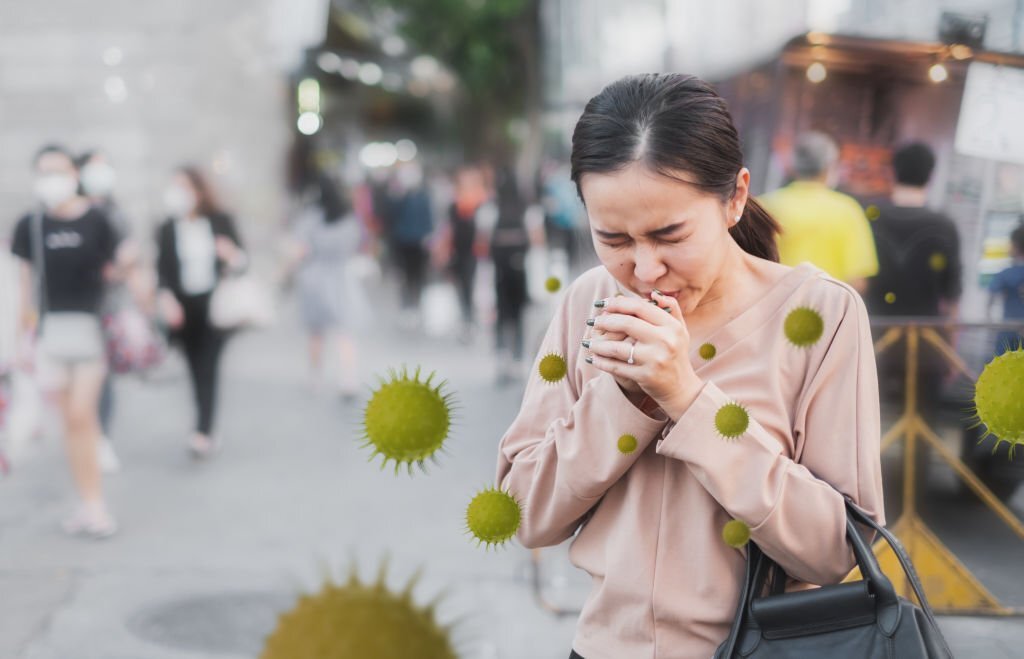
Article by Lalita Panicker, Consulting Editor, Views and Editor, Insight, Hindustan Times, New Delhi
A couple of weeks ago, journalists rushed to report on previously undisclosed genetic evidence that mammals sold at the Huanan Seafood Wholesale Market in Wuhan, China—possibly raccoon dogs—might have sparked the COVID-19 pandemic. But to the chagrin of the researchers who conveyed their findings confidentially to a World Health Organization (WHO) advisory group on 14 March, the news broke before they had finished analysing the data, which consist of RNA and DNA sequences collected at the market in early 2020. www.science.org/content/article/covid-origin-report-controversy
Last week, however, they posted their complete 22-page report on Zenodo, an open repository of scientific research.
To the report’s authors, 19 evolutionary biologists from six countries, the data support the theory that SARS-CoV-2–susceptible mammals were in the right place at the right time to have passed the virus to humans, triggering the pandemic. And they and others, including WHO’s director-general, have blasted China for not sharing the Wuhan market data sooner.
But critics, many of whom suspect SARS-CoV-2 may have escaped from the Wuhan Institute of Virology (WIV), say the new sequences offer no great insight beyond the confirmation that the seafood market also sold mammals. It is “just preposterous” to suggest this is evidence that animals were actually infected with SARS-CoV-2 and transmitted it to humans, computational biologist Erik van Nimwegen says. In a 2021 letter in Science, he and 17 other scientists—including two who issued the new report—called for a “balanced consideration” of the lab-leak hypothesis.
Several of the new report’s co-authors published two papers in Science in 2022 that pinned the pandemic’s origin on mammals sold at the Wuhan market, stressing that it is one of just four places in the city that sold wildlife susceptible to SARS-CoV-2. Those conclusions are bolstered by the new report, its authors say. “These arguments stand in stark contrast to the absence of evidence for any other SARS-CoV-2 emergence route,” their report concludes.
Science examines some of the key issues.
How exactly were the data from 2020 found?
Chinese researchers uploaded the sequencing data from their market samples to GISAID, a virology database, in June 2022, in support of a preprint they had posted a few months earlier. The data were originally hidden from other GISAID users but became accessible in January. Florence Débarre, an evolutionary biologist at CNRS, the French national research agency, who has become prominent on social media for her analyses of COVID-19 data and also sparring with lab-leak proponents, says she stumbled onto the sequences and shared them with colleagues. Their analysis found the evidence for coronavirus-susceptible mammals at the market.
A day after Débarre and colleagues told a member of the Chinese team what they had found, GISAID made the data invisible, apparently at the submitter’s request. In the Zenodo report, the researchers state their analysis is “not intended for publication in a journal” or meant to scoop the Chinese team’s paper, which is under review by the Nature family of journals. As the report explains, they have downloaded the data but are not making them public yet in hopes the Chinese researchers will soon do so.
What does the genetic evidence in the report say?
Chinese researchers, as well as the Chinese government, have waffled about on whether mammals were for sale at the market. The new data arguably provide the strongest evidence yet that key SARS-CoV-2-susceptible species were there when COVID-19 emerged. The 2020 Chinese team that visited the market collected 923 “environmental samples” from the market stalls’ containers, surfaces, and drains. In their report, Débarre and colleagues say 49 of those samples infected with SARS-CoV-2 RNA also contained mitochondrial DNA (mtDNA) that clearly identified five mammals: the common raccoon dog, Malayan porcupine, Amur hedgehog, masked palm civet, and hoary bamboo rat. They also found other DNA, as well as RNA from the mammals. “The co-occurrence of SARS-CoV-2 virus and susceptible animal RNA/DNA in the same samples, from a specific section of the Huanan market, and often at greater abundance than human genetic material, identifies these species, particularly the common raccoon dog, as the most likely conduits for the emergence of SARS-CoV-2 in late 2019,” the authors wrote. The group produced a “heat map” that shows the density of SARS-CoV-2 was “hottest” in market areas near stalls that sold the mammals.
Experiments have shown SARS-CoV-2 easily infects raccoon dogs—commonly raised for fur in China, but also sold for meat in “wet” markets like the one in Wuhan—and that they shed high levels of the virus. The report describes finding raccoon dog mtDNA in six samples from two different stalls in the Wuhan market. A sample from a cart that tested positive for SARS-CoV-2 also had “abundant” raccoon dog genetic material. Far less human genetic material was found in the same sample. The researchers say this suggests—but doesn’t prove—the raccoon dog or dogs on the cart were more likely to have spread the virus than humans working the stall or shopping near it. When they compared the mtDNA in the market samples with ones previously reported by other scientists, the closest match came from a wild raccoon dog, which is distinct from the subspecies raised for fur. This suggests that if raccoon dogs introduced the virus to the market, researchers investigating COVID-19’s origins should look to China’s wildlife trade, not the fur farms.
What are other scientists saying about the newly uncovered sequences?
Based on interviews—ScienceInsider reached out to all 18 authors of a 2021 letter calling for a “balanced consideration” of the lab-leak hypothesis—and social media reactions, the new findings have persuaded some researchers that animals at the market were the likely source of SARS-CoV-2. But for most, it has not changed where they stand on the origin debate. Division also remains on the appropriateness of Débarre and colleagues analysing the Chinese data. Some who agreed with the WHO director-general that the Chinese researchers should have shared the data long ago applauded the group’s attempt to force the disclosure of the market sequences, whereas others have questioned the ethics of discussing the data before the China team publishes its own paper.
//////
The Global Polio Eradication Initiative (GPEI) reported last week that seven African children, six in the Democratic Republic of the Congo and one in Burundi, were recently paralyzed by strains of poliovirus derived from a new version of the Albert Sabin© live oral polio vaccine. www.science.org/content/article/news-glance-modernizing-bed-nets-iding-solar-system-visitor-and-health-lessons
These are the first cases linked to the vaccine, novel oral polio vaccine type 2 (nOPV2), which has been genetically tweaked to avoid just this problem. Vaccine-derived strains can arise in places where vaccination rates are low and the weakened vaccine virus can keep spreading person to person and revert to its paralytic form. Since nOPV2 was rolled out 2 years ago, GPEI has administered almost 600 million doses in response to outbreaks in 28 countries. Experts say these reversions, though disappointing, seem to be extremely rare, and the vaccine appears much more genetically stable than its predecessor. The new cases, they add, underscore the need to boost vaccine coverage in order to head off such reversions in the first place.
////
US intelligence agencies must declassify information related to China’s Wuhan Institute of Virology (WIV) and the origin of the COVID-19 pandemic within 90 days, according to a bill signed into law on 20 March by President Joe Biden. www.science.org/content/article/news-glance-modernizing-bed-nets-iding-solar-system-visitor-and-health-lessons
Both chambers of Congress passed the declassification bill with strong bipartisan support. WIV has received intense scrutiny thanks to its long history of working with bat coronaviruses, including a distant cousin of SARS-CoV-2, the cause of the pandemic. Some suspect WIV accidentally released the virus, perhaps after engineering a strain from bats to be more infectious in humans. US intelligence agencies have delivered conflicting assessments on that possibility, but released little of the data behind their conclusions. The law asks for details about WIV researchers who allegedly became sick with a respiratory illness in the fall of 2019, before a COVID-19 outbreak clearly surfaced in Wuhan in December.
/////
Two vaccines tested by a Dutch veterinary research centre have proved effective against highly infectious bird flu in a first experiment conducted under a controlled environment, the Dutch government said on Friday. www.medscape.com/viewarticle/989879?src=wnl_edit_tpal&uac=398271FG&impID=5266608&faf=1
“Not only did the vaccines give poultry used in the lab protection against disease symptoms but they also countered the spreading of the bird flu,” the government said in a statement. One vaccine was produced by France’s Ceva Animal Health and the other by Germany’s Boehringer Ingelheim, an official document on the Dutch government website showed. Avian influenza, commonly called bird flu, has been spreading around the world in the past year, killing more than 200 million birds – and six million in the Netherlands alone – sending egg prices rocketing and raising concern among governments about human transmission.
Some countries including China already vaccinate against bird flu and as the virus seems to have become endemic some other governments around the world that have opposed vaccines are reconsidering. Their opposition centred on fears a vaccine could mask the spread of bird flu but tests indicate it would not be the case with the two vaccines tested in the Netherlands. As part of a European programme, the Netherlands has been testing bird flu vaccines for egg-laying hens while France is carrying out tests on ducks, Italy on turkeys and Hungary on Pekin ducks. Most of these tests are based on existing vaccines and adapted to the particular H5N1 strain that has been spreading in Europe. The Wageningen Bioveterinary Research, located northeast of Amsterdam, had carried out tests on four chicken vaccines before selecting those of Ceva Animal Health and Boehringer Ingelheim. The other two vaccines that were tested were produced by Bulgaria’s Huvepharma and Merck Sharp & Dohme (MSD) respectively, the official document showed. “I’m happy that we have two vaccines with which we can take the vaccination process against bird flu forward. I’m putting in the next steps as quickly as possible but in a responsible way (…),” Dutch Minister of Agriculture Piet Adema said in the statement. A field trial will be launched to see whether the vaccines that work in a laboratory setting are also effective if applied in wider conditions. The trial should take more than a year to give an idea of how long chickens are still immune after vaccination.


